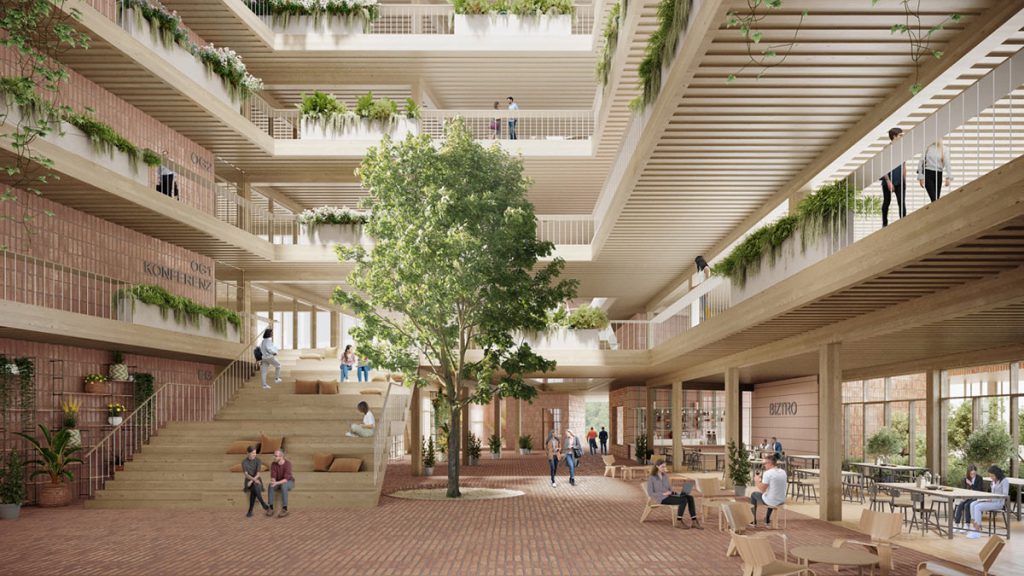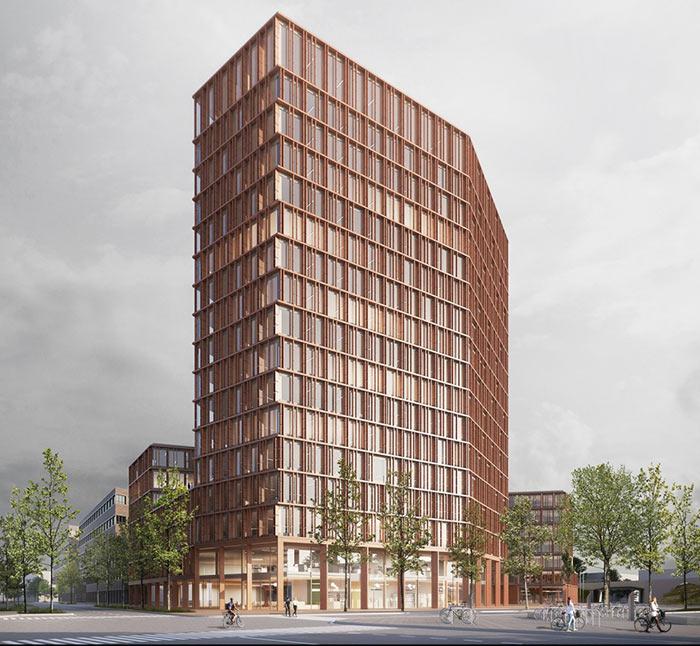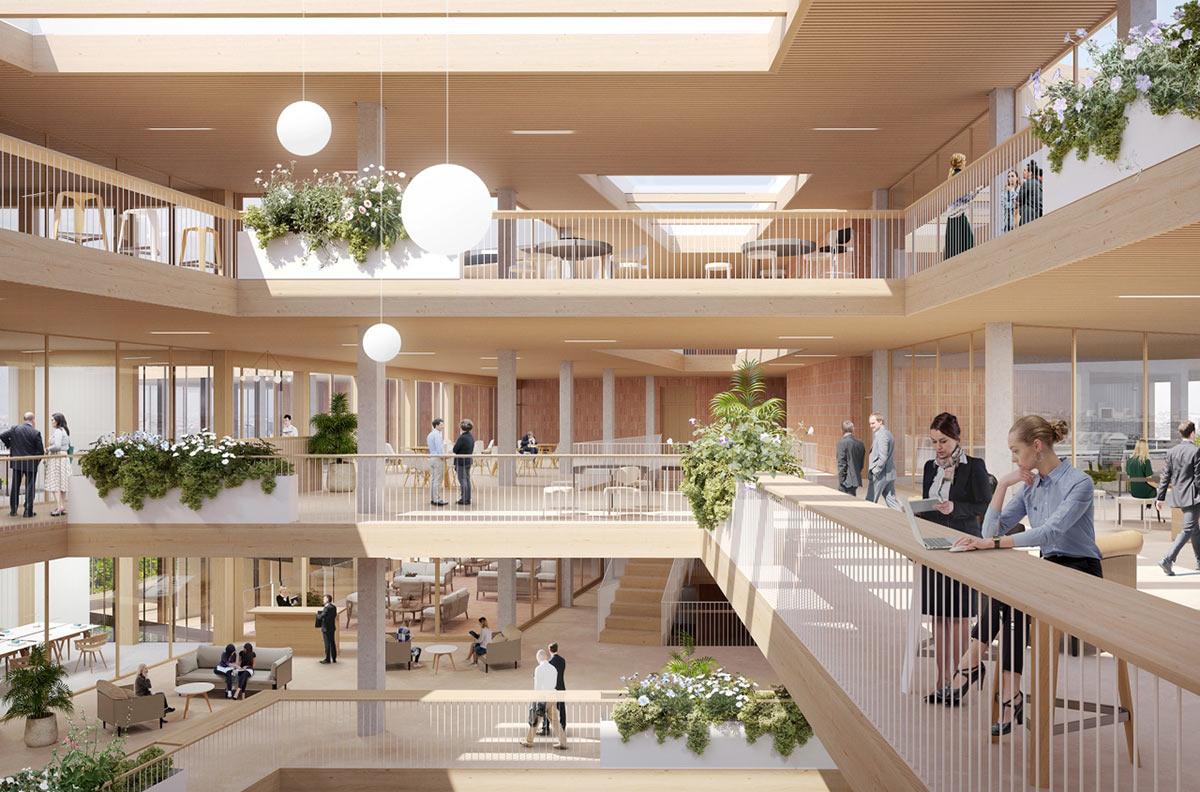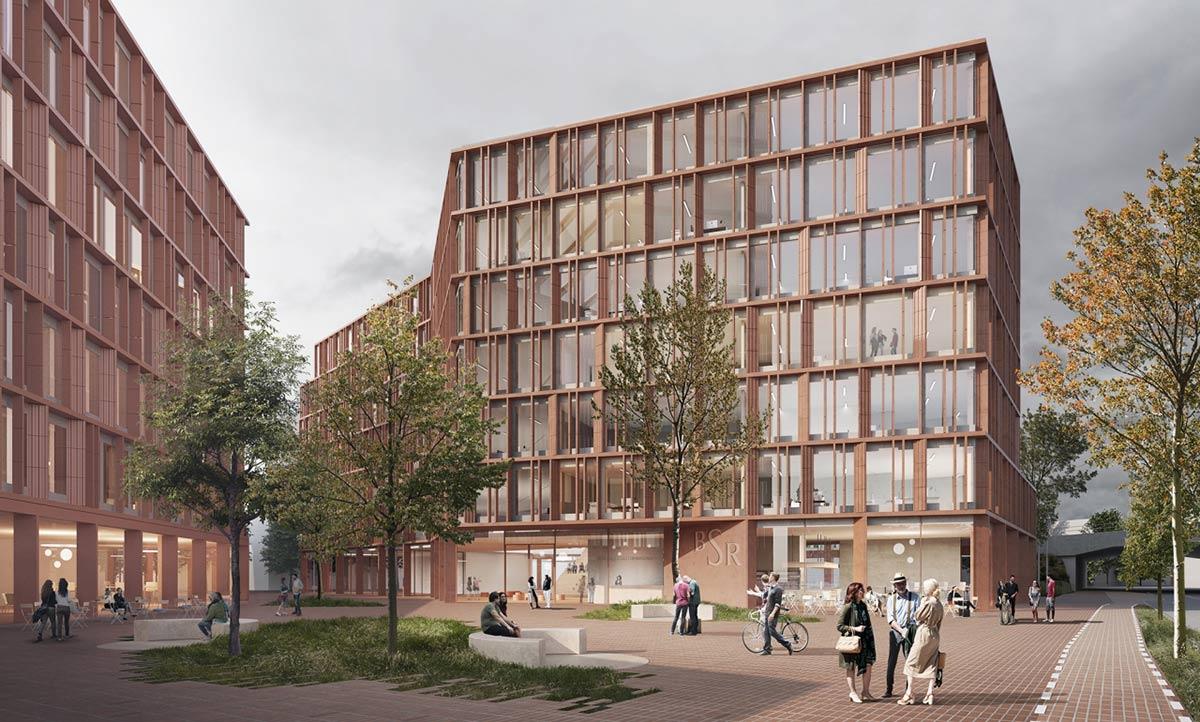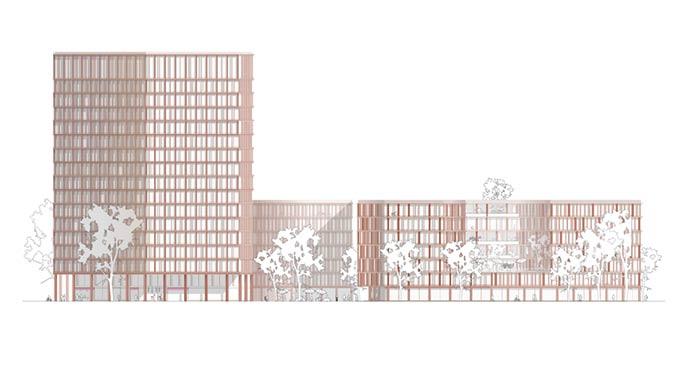Better, greener, cleaner
The teams at Berlin Waste Management are out and about day in day out, keeping Germany’s capital city looking good and ensuring resources remain in the cycle. Their new headquarters in Südkreuz have the same aspirations and are a prime example of sustainable ideas.
Say goodbye to the throwaway society. This is one of the advertising messages used by Berlin Waste Management (BSR – Berliner Stadtreinigung) in their campaign to prevent waste. They are one of Berlin’s biggest employers, with a workforce totalling almost 6,000 people. And their marketing focus emphasizes that “our environment benefits especially from the waste that isn’t created in the first place”.
Consequently, it is no surprise that BSR wanted a sustainability and recycling showpiece as their new headquarters. An architecture competition was therefore launched to find a concept that is just as green and clean as BSR itself and also fits in with the urban planning.
Architectural offices Franz&Sue and Schenker Salvi Weber from Vienna submitted the winning entry, based on a comprehensive sustainability concept. “The building is planned as a hybrid-timber structure – construction, operations, and at some point also the deconstruction are designed sustainably and correspond to the corporate values of our client,” says Franz&Sue project manager Elisabeth Nobl.
A campus opens up
This flagship project is set to be built in the new neighbourhood Schöneberger Linse, which stretches from Südkreuz railway station to Schöneberg suburban train station. Many different construction projects have already been completed here – ranging from apartments and office buildings through to pre-schools and schools.
The building is planned as a hybrid-timber structure – construction, operations, and at some point also the deconstruction are designed sustainably.
Elisabeth Nobl, project manager at Franz&Sue
The last remaining gap in this modern area of the city will be the new home of this major German institution. This new BSR project is planned as a campus that opens up to the outside world. In future, more than half of the space will be rented out to external companies.
Two separate buildings
The design uses two separate structures: one seven-storey building for BSR in the northern section, and another building with an adjacent 17-storey high-rise housing commercial space, a cafeteria and conference rooms in the southern section. “Important factors for us are the campus concept, a connecting ground floor, and a neighbourhood square with green areas to draw people into the district,” the architects explain.
An environmental educational trail leads visitors across the grounds, explaining what is needed in a sustainable circular and resource economy. It is a principle that is also known as Cradle to Cradle, and it has been applied to the design and operation of the new headquarters.
A new way to store materials
The two structures have reinforced concrete cores that allow large spans across the central atria, with an adjoining timber-framed belt that is six metres wide. This contains the office units whose exposed location gives them a direct view of the surrounding area. On each storey, loggias are sheltered from the weather, which even makes them suitable for outdoor working.
Besides renewable timber, other sustainable construction materials are also found throughout the building, which could be seen as a new way to store materials. For example, the floors are made of recycled bricks, both outdoors and indoors.
Office space can be divided up
Sustainable building operation is also expected on all floors. Photovoltaic modules produce solar power, geothermal heat pumps extract warmth from the earth, and a treatment system processes the rainwater that is subsequently used for irrigation and WCs.
The office space is divided into units of 400 m², which can be joined up or divided as required. This enables vacant units to be rented out externally if more BSR workers choose to work from home. It is an arrangement that even prevents the workstations from being wasted. Everything remains in the cycle.
Text: Gertraud Gerst
Translation: Rosemary Bridger-Lippe
Visualizations: Franz&Sue, Schenker Salvi Weber
